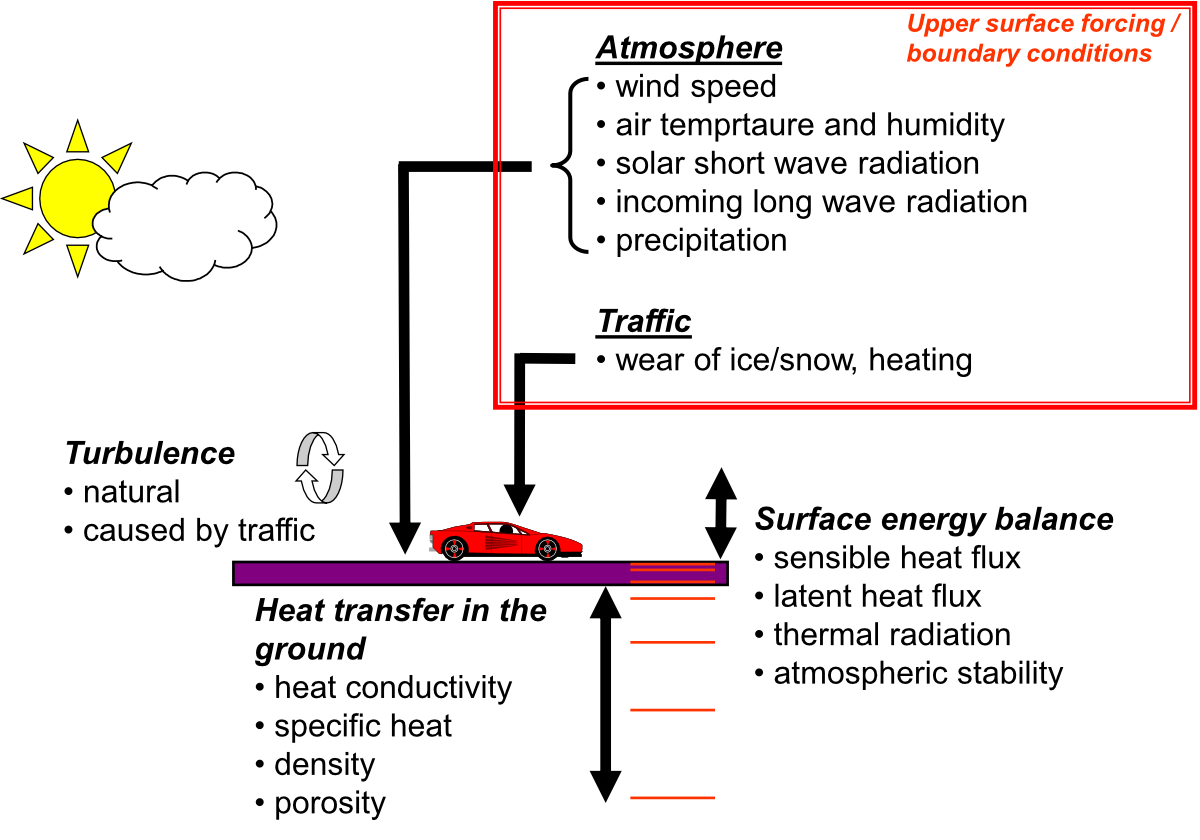The road weather model
At the Finnish Meteorological Institute, a road weather model has been developed to forecast specific road weather related parameters, such as road surface temperature and road condition. Road condition classifies the road surface into different categories: dry, damp, wet, or being covered by snow, ice or frost. The traffic index is another road weather classification, which specifies in more general terms whether the driving conditions are normal, bad or very bad. The traffic index is a combination of the road condition and weather information.
Model physics
The road weather model is 1-dimensional energy balance model that calculates vertical heat transfer in the ground and at the road-atmosphere interface, taking into account the special conditions prevailing at the road surface and below it. The effect of traffic is also accounted for.

The operational run consists of two parts: the first one is based on observations and the second one on a forecast. The purpose of the first part of the run is to set the initial state of the forecast-based run. This "observation run" is based on meteorological SYNOP observations, weather radar precipitation data and in some model versions also on observations from the road weather stations. The forecast-based part of the run uses output from a weather forecast model with duty meteorologist's corrections.
The road condition interpretation is based on various storage terms, which describe the amount of water, snow, ice, and frost on the surface. The model constantly tracks changes in these storages caused by melting, freezing, evaporation, condensation, and mechanical wear. The storages may also interact with each other, e.g. the size of the water storage is increased by precipitation as well as by melting of snow or ice.

Operational usage
The road weather model is a tool for meteorologists when delivering road weather forecasts or warnings of bad or very bad driving conditions. Also, road maintenance personnel may use the model output as background information when planning and scheduling road maintenance operations.
One further developed road weather products is a road maintenance scheduling model. This model takes into account e.g. the limits set by the maximum allowed amount of snow on the surface. The model calculates when the next expected snow removal needs to be carried out to fulfil the given requirements. A scheduling model is developed not only for snow removal but also for salting of the road surface.
10.9.2021
